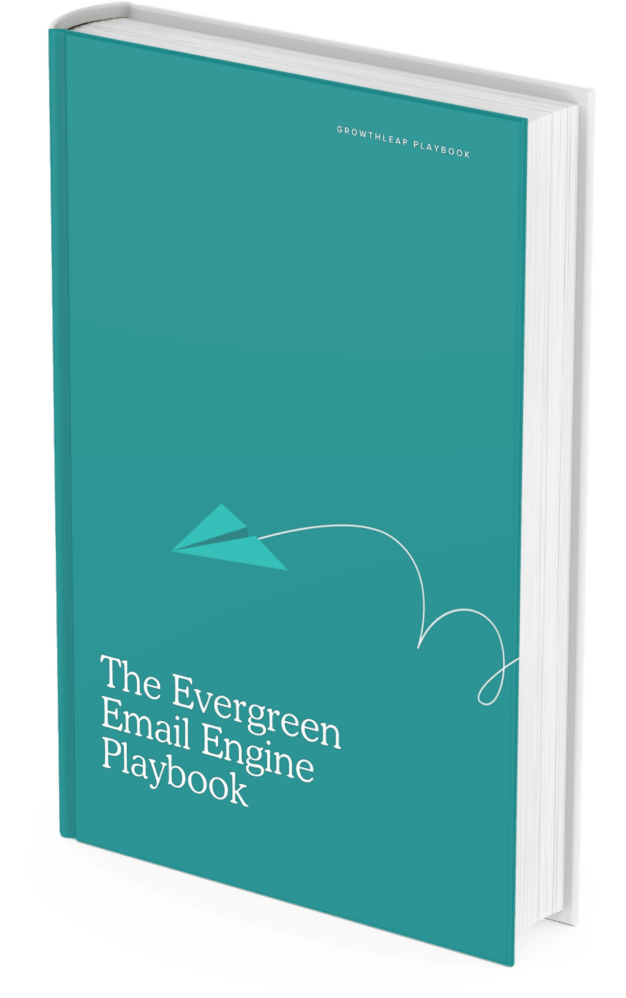
Many people consider starting a business to be a dream come true. It can be an excellent opportunity to take charge of your career, establish your own hours, and earn your own money.
However, as any sales professional knows, owning a company is full of challenges. One of them is finding strategies to stand out in a crowded market and keeping your sales pipeline full.
Creating urgency with your prospects and clients is one sales tactic that might assist you in overcoming these problems. The feeling of generated urgency can be a powerful motivation. Using it appropriately can help you close more sales and develop your business.
So, what exactly is sales urgency? And how can you convey a sense of urgency without appearing pushy or desperate? Continue reading to discover.
What is urgency in sales?
Professionals use urgency in sales to give the impression that their target audience and prospective consumers must move quickly if they want to buy your goods or get the best price. Creating a sense of urgency encourages clients to buy now rather than later.
Often, urgent advertising appeals to the audience’s FOMO, or ‘fear of missing out’, on something essential. Combining two factors is usually required to create anxiety surrounding missed opportunities.
To begin, businesses often demonstrate why the product is desired. Second, they limit the number of products offered and give limited-time offer pricing, to combine the factors of desirability and scarcity.
Sales urgency is more vital in today’s market than ever. Unfortunately, breaking through the noise in a world where salespeople bombard customers with marketing messages and sales pitches is difficult. Creating urgency is one method to break through the clutter and capture your prospect’s attention.
How to create urgency in sales
There are various strategies for increasing sales urgency. Though many of these strategies appear similar, they each have goals and potential outcomes. Consider the following procedures and approaches when creating urgency in sales:
Find the right audience
Urgency only works when it’s applied to the right people. No matter how persuasive your offer is, it won’t convert if your audience isn’t interested in your product.
Instead of forcing urgency on cold leads, focus on targeting high-intent buyers – those who are already interested in solutions like yours.
For instance, Apple pre-launches iPhones exclusively to high-intent buyers, offering early access to existing customers before making sales public. Doing this creates demand (and hype!) before the product is even available.
Here’s how to do it:
- Market research: Identify demand using tools like Google Trends, Facebook Audience Insights, and keyword research platforms.
- Customer profiling: Understand pain points and what urgency triggers work for your audience.
Segmentation: Divide customers into groups based on their engagement level (like cart abandoners, past buyers, email subscribers).
Identifying the ideal buyer persona for your urgent sales techniques is key in getting started. After you’ve honed in on your target audience, the rest of your sales urgency efforts will come more naturally.
Set a deadline
If customers know they don’t have to buy right away, they’ll put off their decision – and potentially forget about it altogether. A limited-time offer creates urgency and gives people a reason to act now.
Helpful techniques:
- Flash sales: Try quick, highly time-sensitive sales like “50% off for the next 24 hours only.”
- Time-based bonuses: You can also run campaigns like “Buy before midnight to get a free upgrade.”
- Countdown timers: Visually reinforce urgency with a ticking clock on landing pages or in emails.
Many travel booking sites like Booking.com use countdown timers showing how many rooms are left at a discounted price. This creates pressure to book before missing out.
Tip: Want to have your own custom deadline counters in your emails? Deadline Funnel can help!
[Try free for 14 days]
Choose words that create implied urgency
Even if no hard deadline exists, you can still imply urgency through strategic copywriting. Words like “Limited time,” “Last chance,” and “Act now” naturally encourage faster decisions.
How to do it:
- Use ‘power words’: Phrases like “Hurry,” “Exclusive,” and “Going fast” increase urgency.
Time-sensitive CTAs: Replace generic “Buy Now” buttons with:- “Claim your spot before it’s gone!”
- “Get this deal before midnight!”
- “Last chance—offer expires soon!”
- Leverage scarcity: “Only 3 left at this price” or “Sale ends in 2 hours” taps into FOMO (fear of missing out).
Amazon uses real-time scarcity warnings like “Only 2 left in stock—order soon” to nudge hesitant buyers.
Create scarcity
Going off of leveraging scarcity in our last technique, limiting the number of sales or products available is an incredibly effective way to create urgency.
People want what they can’t have or what they might lose soon. Scarcity plays on this principle, making products feel more valuable and desirable.
Ways to make it happen:
- Limited stock alerts: Show “Only 5 left!” on product pages or in your ads and emails.
- Flash sales: Offer deep discounts for a very short period – “50% off for the next 3 hours” is an example of this.
- Exclusive memberships: Limit access to VIP customers only, like “Only 100 spots available”.
Nike’s limited-edition sneaker drops generate massive urgency by making releases available only in select locations or through exclusive raffles.
Make purchasing easy
You can raise the urgency of a sale by simplifying the purchasing procedure, such as putting a button on your website that allows customers to make a direct and distraction-free purchase.
In addition, using popular payment apps to buy things can reduce customers’ time to complete their purchases.
An analysis by Fintech Magazine revealed that retailers offering four express checkout methods achieved a 67% conversion rate, whereas those providing only a single express checkout option had a conversion rate of 54%. Numbers like that are hard to ignore.
How to do it:
- One-click checkouts: Amazon’s 1-Click Ordering set the gold standard for ease of purchasing.
- Auto-fill options: Let customers save payment, shipping, and billing info for faster checkout.
- Multiple payment methods: Accept PayPal, Apple Pay, Klarna, and other fast payment options to simplify the process and give customer options.
Notify your customers about new deals
Whether you utilize email marketing or phone notifications through an app, notifying your customers about new sales deals before or shortly after they begin can help boost urgency.
You can also use these approaches to regularly remind your customers of the limited time or product scarcity. This helps them remember to purchase while they still have the opportunity.
How to do it:
- Email countdowns: “Only 12 hours left to get 30% off!”
- Push notifications: Alert mobile users when a flash sale is about to expire.
- Abandoned cart reminders: Follow up with customers who left items in their cart, reminding them of stock scarcity.
Travel booking sites like Expedia send email alerts when flight prices drop or are about to increase, pushing travelers to book fast.
Offer payment in installments
A high price tag can delay purchasing decisions. Breaking costs into smaller payments makes it easier for people to commit now instead of waiting.
In addition, making the item more accessible this way enhances ways to create urgency because it may allow the buyer to obtain the item sooner than if they had to save more money to pay the entire price in one transaction.
Ways to implement:
- Buy Now, Pay Later (BNPL) options: Use Klarna, Affirm, or Afterpay to let customers pay over time.
- Installment plans: Offer 3-, 6-, or 12-month financing.
- Zero-interest deals: Provide interest-free payment options to encourage fast purchases.
A study by Stipe found that using a BNPL model increased revenue by 14%!
Offer a bonus incentive
Customers love extra perks, especially when they’re exclusive or time-sensitive. A bonus offer can be the final push someone needs to buy now.
Common tactics:
- Limited-time free shipping: “Get free shipping if you order within the next 2 hours!”
- Free gifts with purchase: “The first 50 buyers get a surprise bonus.”
- Early access deals: “Order now to access new products before anyone else.”
For instance, Sephora’s free sample promotions drive urgency by offering exclusive gift sets only while supplies last.
Write powerful subject lines for your emails
Subject lines are your first (and sometimes only) chance to get noticed in a crowded inbox. To spark urgency, lean into time-sensitive language and action-oriented phrasing. People naturally respond to cues that something is limited, urgent, or exclusive — and that instinct can drive significantly higher open rates.
Hints for subject line mastery:
- Use urgency triggers: “ending soon,” “last chance,” “just dropped,” “only today,” or “don’t miss out.” are great options.
- Add action verbs: “Claim,” “Grab,” “Unlock,” “Join,” — these create energy and a sense of movement.
- A/B test variations: Using A/B testing sees what resonates with your audience. Even small tweaks can lead to big differences in open rates.
Tip: Want to see how your subject line stacks up before hitting send? Use Warmup Inbox’s free subject line tester to analyze clarity, urgency, and spam risk — so your emails get opened, not ignored.
Use numbers
Numbers help make urgency feel real and measurable. Instead of vague claims, quantify your offer to create a stronger impact.
How to do it:
- Stock alerts: Send out emails with phrases like “Only 3 left in stock!”
- Popularity stats: Show off by saying something like “Over 10,000 customers have bought this today.”
- Order deadlines: “Place your order within 2 hours for next-day delivery.”
Booking.com does this tactic well by displaying live purchase activity, showing how many people are viewing or booking a hotel at that moment to encourage immediate action.
Use warm colors
Color psychology is inextricably related. HubSpot research backs up the theory that choosing warm hues (red, yellow, and orange) for your CTA buttons can generate a sense of urgency that encourages action.
Conversely, cool hues like blue and green could be more successful at getting visitors to click.
How to pop:
- Use red for limited-time offers: Studies show red CTAs increase conversions by 34%.
- Highlight urgency with contrasting colors: Make countdown timers and buttons stand out.
- Test button colors: A/B test different CTAs (red vs. green) to see what converts best.
The basic sales process
The sales process is not a one-size-fits-all journey, but there are many basic steps from the beginning of a sale to the end. Your sales process might look like this:
Prospecting
Prospecting is the initial phase in the sales process. At this stage, you identify potential clients and determine if they need your services and if they can afford them.
Preparation
The following stage is preparing for your first encounter with a potential customer by researching the market and gathering essential information about your product or service. Next, create your sales presentation and personalize it to the specific demands of your target client.
Again, preparation is essential for achieving success. The more you understand your prospect and their demands, the more you will be able to answer their issues and differentiate yourself from the competition.
Approach
If you are ready to make initial contact with your client, this is known as the approach. Sometimes this is done in person, sometimes over the phone. Three approaches are commonly used.
- Premium approach: Give your potential client a gift at the start of your encounter.
- Question approach: Getting the prospect’s attention by asking a question.
- Product approach: Provide the prospect with a sample or a free trial of your service to review and evaluate.
Presentation
During the presentation stage, you actively show tried and true tips on how your service or product addresses the needs of your target customer. Presentation implies using PowerPoint and presenting a sales pitch, but this is not always the case—you should actively listen to your customer’s demands and then act and answer accordingly.
Handling objections
Handling objections is the most undervalued aspect of the process. This is where you listen to and address your prospect’s issues. But, unfortunately, it’s also where many unsuccessful salespeople give up after one rejection.
Closing
In the last stage, you receive the client’s choice to proceed. Depending on your business, you might employ one of these three closing tactics.
- Choice close: Assuming the sale and providing the prospect with a choice in which both alternatives close the sale—for example, “Will you be paying the entire fee upfront or in installments? Or will it be cash or credit?
- Extra inducement close: Offering the prospect a free month of service or a discount to entice them to buy.
- Standing room only close: Creating increased urgency by emphasizing the importance of time—for example, “The price will go up after this month” or “We only have six spaces remaining.”
Follow-up
Your work continues once the sale is completed. The follow-up step keeps you in touch with closed consumers, not just for potential repeat business but also for referrals. Maintaining relationships is also important because retaining current clients is six to seven times less expensive than obtaining new ones.
Why Is urgency in sales important?
There are numerous advantages to building urgency in sales. Here are a few instances.
You get to stand out
Millions of entrepreneurs throughout the world start new firms each year. Every year, nearly 600,000 new firms open in the United States alone.
As so many businesses compete for attention, identifying strategies to stand out from the crowd is more crucial than ever.
Creating sales urgency is one method. If you can create a sense of urgency around your product or service, you’ll be able to attract your customers’ interest and convince them to pay attention to your company.
Helping customers make immediate decisions
Some marketers have improved sales by %332 by establishing a sense of urgency in their customers. People’s natural desire to avoid missing out is tapped upon by urgency.
Consumers who believe they will miss out on something are more likely to act. Smart marketers understand this and use the power of FOMO to increase sales. The results are stunning. FOMO marketing accounts for 60% of total sales.
You build better relationships with your customers
Sales urgency can be smooth and friendly when done correctly. Applying urgency correctly can help you develop stronger relationships with your consumers.
How? By generating sales urgency seeds in your prospects, you demonstrate your commitment to their success. You are interested in assisting people with their challenges and seeing them succeed. This fosters trust and rapport, which are necessary for any successful sales partnership.
Making purchasing easier for your customers
Getting a prospect’s attention is one thing. It’s another thing entirely to seal the transaction. Creating sales urgency can help you complete deals faster by moving prospects through your buying process more rapidly.
In addition, you’ll be able to persuade your prospects to make a purchase sooner rather than later with the same principle work. Customers who feel compelled to buy now are less inclined to procrastinate or try to negotiate a lower price.
Increasing your sales
Your sales strategy is just as good as your ability to implement it.
When you have a sense of urgency about your sales goals, you are more inclined to act and complete tasks. This will allow you to fine-tune and improve your sales strategy.
Conclusion
The ability to convey a sense of urgency might mean the difference between closing a contract and falling short of the competition in sales. A strong sales tactic, urgency, can inspire potential customers to act and make a purchase from you. A great way to increase conversions is to make people feel they will lose or miss out on a fantastic chance.
Like many other strategies, the greatest way to use urgency is in moderation. Refrain from constantly pressuring potential consumers; doing so will cause them to lose interest in your services. Instead, concentrate on presenting fantastic sales that are temporary.




